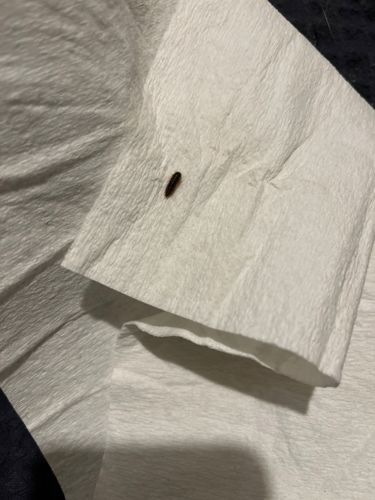Carpet Beetle Larva
Scientific Name: Dermestes lardarius (Larder Beetle larva) or other species within the Dermestidae family (e.g., Anthrenus, Trogoderma)
Order & Family: Order: Coleoptera, Family: Dermestidae
Size: Larvae typically range from 2mm to 12mm in length, depending on the species and stage of development. They are often reddish-brown or black with bristles.

Natural Habitat
Indoors, carpet beetle larvae are found in homes, museums, warehouses, and other buildings where suitable food sources are available. Common locations include carpets, rugs, upholstered furniture, clothing, blankets, and stored food items. Outdoors, they can be found in bird nests, animal carcasses, and insect nests.
Diet & Feeding
Larvae primarily feed on organic materials of animal origin, including wool, silk, fur, feathers, leather, natural bristles, pet hair, and dried animal remains. They can also infest dried plant products like cereals, spices, and dried fruits, especially if mixed with animal products.
Behavior Patterns
Carpet beetle larvae typically avoid light and prefer dark, undisturbed areas. They are often found in cracks and crevices, under furniture, or in closets. Adults are attracted to light and may be seen near windows. They undergo complete metamorphosis, with eggs laid on suitable food sources, followed by larval, pupal, and adult stages. The larval stage is the one that causes damage.
Risks & Benefits
Risks: Carpet beetle larvae can be significant pests, causing damage to textiles, clothing, carpets, and stored food items. They do not bite humans, but their bristles can cause skin irritation or allergic reactions in sensitive individuals. Benefits: In nature, they play a role as scavengers, breaking down organic matter.
Identified on: 9/2/2025